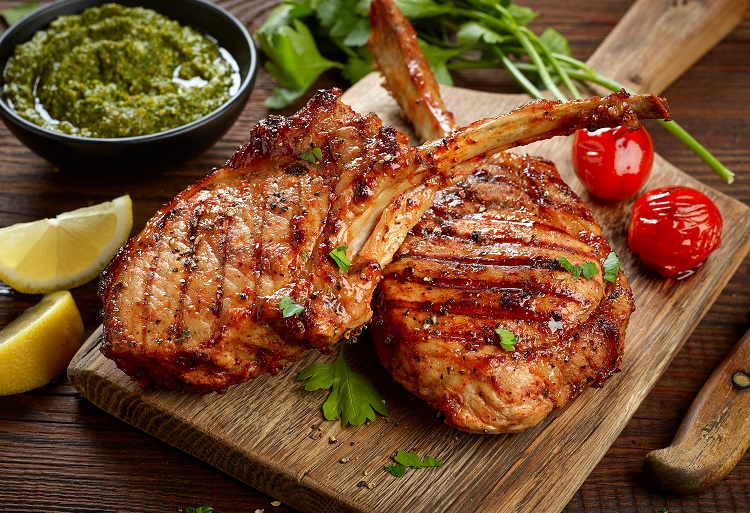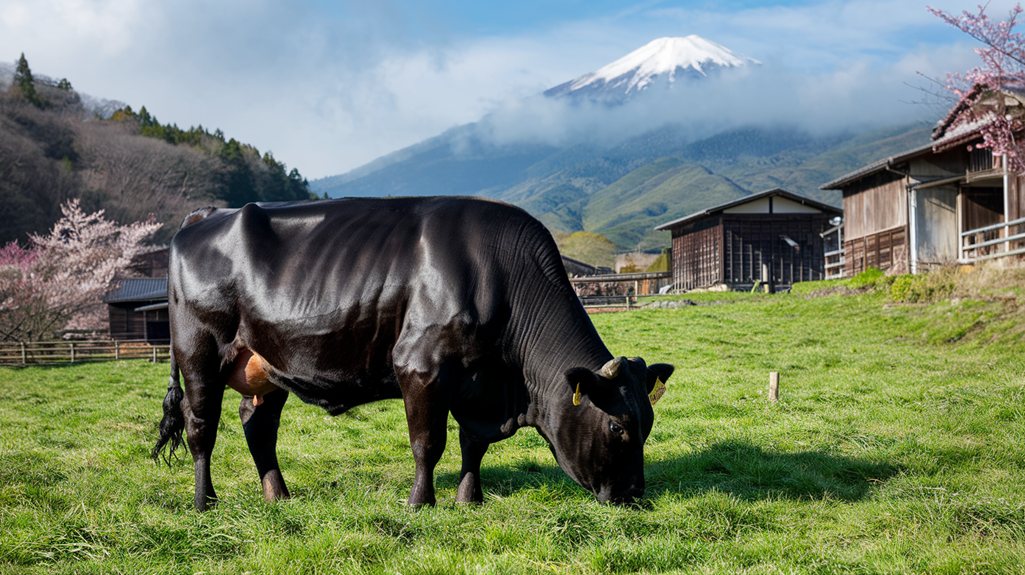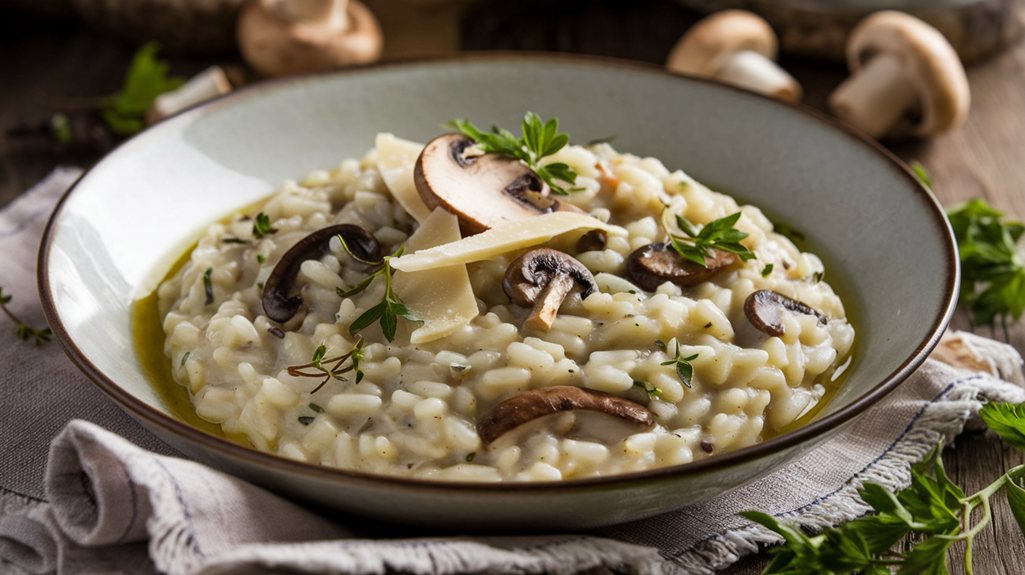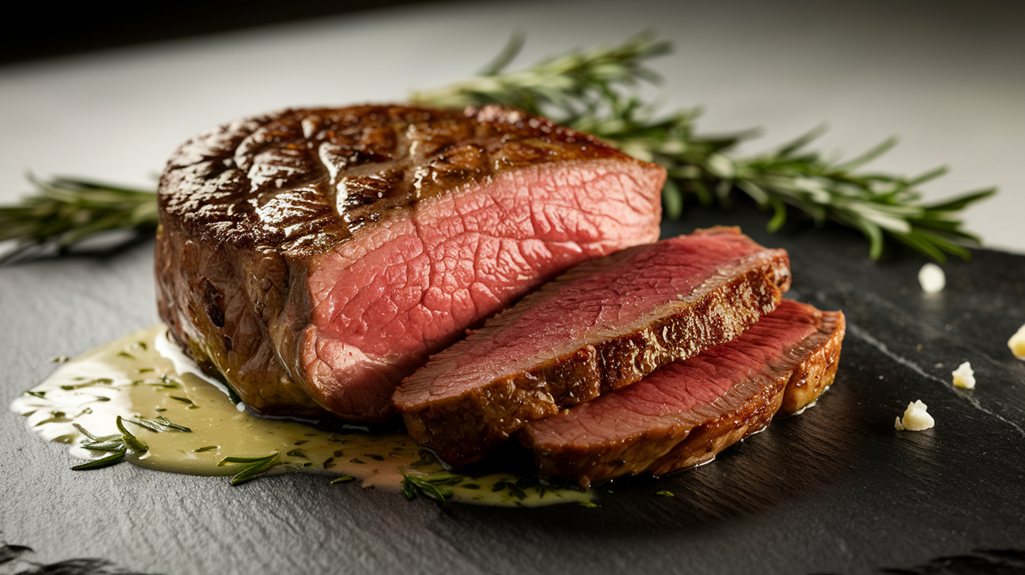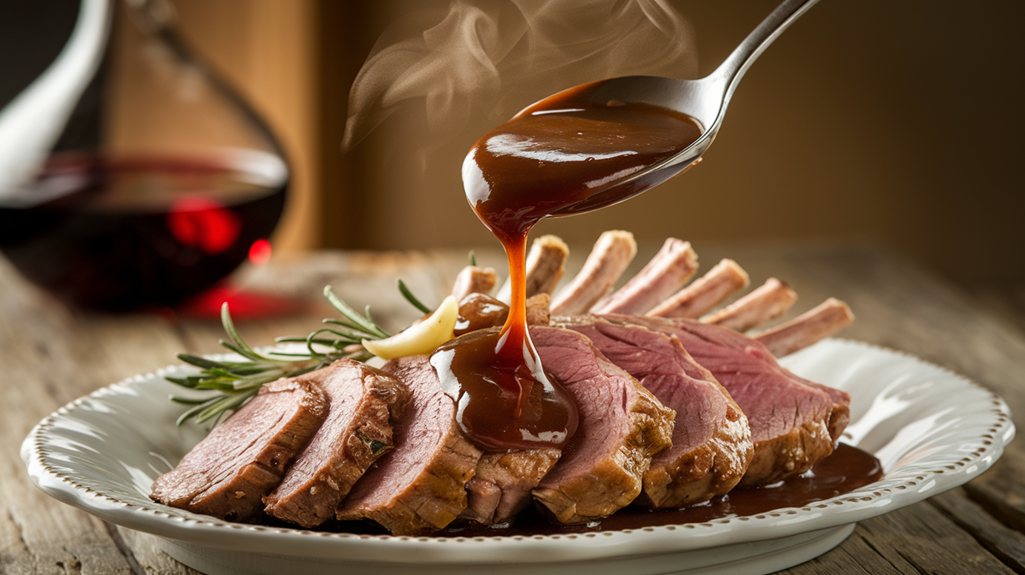There’s nothing more confusing in the supermarket than the meat case. Different cuts of beef are not explained, and labels like “natural,” “organic,” and “enhanced” are seen all over. But what do these terms mean, and which beef cuts are best for braising, quick sautéing, or grilling?
I will walk you through everything you need about beef and steak cuts. You’ll better understand beef, so you will feel a lot more comfortable buying beef next time you shop.
(Also see From Claw to Tail: Techniques How to Cook and Shell Whole Lobster)
Best Beef Cuts and Recommended Cooking Methods
There are many different beef cuts and recommended cooking methods when preparing a delicious and satisfying meal. Here are some of the best beef cuts and their recommended cooking methods:
- Ribeye: This is a tender and flavorful cut of beef that is best cooked on a grill, in a skillet, or under the broiler.
- Tenderloin: This is the most tender cut of beef and is best cooked on a grill, in a skillet, or under the broiler.
- Strip steak: This is a lean and tender cut of beef that is best cooked on a grill, in a skillet, or under the broiler.
- T-Bone steak: This is a flavorful and tender cut of beef that is best cooked on a grill, in a skillet, or under the broiler.
- Flank steak: This is a lean and flavorful cut of beef that is best marinated and cooked on a grill or in a skillet.
- Brisket: This is a flavorful and tough cut of beef that is best slow-cooked in the oven or on a smoker.
- Chuck roast: This is a tough and flavorful cut of beef that is best slow-cooked in the oven, in a slow cooker, or on a smoker.
- Short ribs: This is a flavorful and tender cut of beef that is best slow-cooked in the oven or a slow cooker.
When preparing beef cuts, it’s important to use the proper cooking method to ensure the meat is tender and flavorful. Grilling, broiling, and pan-searing are great for more tender cuts, while slow cooking and braising are better for tougher cuts.
Overall, there are many great beef cuts and recommended cooking methods. By selecting the right cut of beef and using the appropriate cooking method, you can create a wide range of flavorful and satisfying dishes.
(Also see A Guide to Basic Meat Butchering Techniques for Home Cooking)
Best Cuts of Steak and Grades Explained
The best cuts of steak are generally the ones that are the most tender and flavorful. Some popular cuts of steak include rib eye, tenderloin, strip steak, and T-bone steak. The grading of steak is also important, with higher grades indicating more marbling and tenderness.
The USDA beef grading system ranges from Prime, the highest grade with the most marbling, to Choice and Select, which have less marbling. The grading is based on marbling, age, and color.
When choosing a cut of steak, it’s important to consider the cooking method, as some cuts are better suited for grilling, while others may be better for pan-searing or roasting. Let the steak come to room temperature before cooking and rest after cooking to allow the juices to redistribute.
Overall, the best cuts of steak are those that are tender and flavorful, such as ribeye, tenderloin, strip steak, and T-bone steak. The grading of the steak can also impact its tenderness and flavor, with higher grades typically indicating more marbling.
What is The USDA Grades?
The USDA grades are a system used to classify meat based on quality and tenderness. The grades are assigned by the United States Department of Agriculture (USDA) based on factors such as marbling, age, and color.
The three main grades of meat are Prime, Choice, and Select. Prime is the highest grade and is typically the most expensive, as it has the most marbling and is the most tender. The Choice is the second-highest grade and is still a high-quality option, but it may have less marbling than Prime. Select is the lowest grade and is typically leaner but may not be as tender as the higher grades.
The USDA grades are used primarily for beef but can also be applied to other meats, such as lamb and pork. The grading system is designed to help consumers make informed decisions about the meat quality and tenderness they purchase.
Overall, the USDA grades are a system used to classify meat based on quality and tenderness. The three main grades are Prime, Choice, and Select, with Prime being the highest grade and Select being the lowest.
We will take a quick look at what these all mean.
- Prime: Well-marbled beef is a key characteristic of the prime grade. Well-marbled refers to the intramuscular fat that runs through the meat, which produces rich, flavorful, and tender meat. Only 2% of graded beef is worthy of the “Prime.” As a result, this type of beef is most often found in high-end restaurants, steakhouses, and quality butcher shops, and it is usually the most expensive out of all the grades.
- Choice: Most graded beef sold at the supermarket is Choice-graded beef. This grade of beef still contains marbling but to a lesser degree than prime-graded beef. Another difference is that this grade of meat is chewier than Prime and has a less robust taste.
- Select: This grade means the cuts have very little marbling and intermuscular fat, which is the cheapest. Often, this means that the meat is dry or stringy. Some say that it has minimal beef flavor.
Beef Store Labeling
Beef store labeling often includes terms that describe the beef, such as organic, natural, grass-fed, and enhanced. These labels can help consumers make informed decisions about the beef they are purchasing, but it’s important to understand what these terms mean.
Organic beef is raised without antibiotics or growth hormones and is fed an organic diet. Natural beef is minimally processed and does not contain any artificial ingredients. Grass-fed beef is raised on grass and another forage diet, while enhanced beef has been injected with a solution to improve its tenderness and flavor.
It’s important to note that these terms are not interchangeable, and each has specific criteria that must be met. Additionally, while these labels can provide some information about the beef, they do not necessarily guarantee the quality or taste of the meat.
Overall, beef store labeling often includes terms such as organic, natural, grass-fed, and enhanced, which can help consumers make informed decisions about the beef they purchase. Understanding these terms and selecting the beef that best meets your preferences and needs is important.
Is Grass-Fed Beef Better Than Grain Feed?
Whether grass-fed beef is better than grain-fed beef is complex, with different opinions and arguments.
Grass-fed beef is typically leaner and has a different flavor profile than grain-fed beef. Some people prefer the taste of grass-fed beef, and it may have a slightly higher nutritional profile because it is leaner and contains more omega-3 fatty acids.
On the other hand, grain-fed beef is typically more marbled and has a richer flavor due to the higher fat content. It’s also generally more affordable and widely available than grass-fed beef.
It’s important to note that grass-fed and grain-fed beef can be raised sustainably and ethically or produced in ways harmful to the environment or animal welfare.
The Choice between grass-fed and grain-fed beef comes down to personal preference and priorities, such as taste, nutrition, and ethical considerations. Selecting the beef that aligns with your values and meets your needs is important.
In a blind taste with my family comparing grass-fed and grain-fed ribeye steaks, there was a split decision on which was better. The claim that how the cows were fed affects the beef’s taste is debatable, so I recommend buying better quality beef instead of worrying about how the cows were fed.
What’s The Difference Between Natural Beef Vs. Organic?
Natural and organic beef differ in the specific requirements and regulations governing each term.
Natural beef is minimally processed and contains no artificial ingredients or added colors or flavors. The USDA does not regulate “natural,” but companies must meet specific guidelines to use the label. The cattle used for natural beef can be raised on conventional feed or grass, and antibiotics or hormones are not restricted.
The USDA certifies organic farms and products, and strict regulations govern the label’s use. Organic beef, on the other hand, is produced in compliance with specific USDA standards. Organic cattle must be raised without antibiotics or growth hormones and fed an organic diet that does not contain genetically modified organisms (GMOs). The feed must also be free of synthetic pesticides and fertilizers.
Overall, while natural and organic beef is minimally processed and does not contain artificial ingredients, organic beef is subject to specific regulations regarding feed, antibiotics, and hormones, while natural beef is not. Consumers who prioritize organic or natural products may choose one based on these differences.
Natural labeling is ambiguous because there is no regulation with that term. That means every beef producer can decide what is considered natural and slap a label on their product claiming to be natural.
What are The Different Types of Ground Beef?
Several different types of ground beef can be used in various recipes. There are three common types: chuck, sirloin, and round. Each is used for specific recipes, and knowing which one to use is important.
The most common types of ground beef include:
- Ground beef: This is the standard type of ground beef and can be used in various recipes, from burgers to meatloaf.
- Ground chuck: This ground beef comes from the shoulder and is typically 80-85% lean. It’s flavorful, tender, and popular for burgers and meatballs.
- Ground round: This beef is typically 85-90% lean from the cow’s rear. It’s a leaner option that is great for recipes where you don’t want a lot of fat.
- Ground sirloin: This ground beef comes from the cow’s rear and is typically 90-95% lean. It’s the leanest option and a great choice for recipes where you want a lot of protein without much fat.
Overall, the different types of ground beef offer varying fat content and flavor levels, making them suitable for different recipes. Choosing the right ground beef for your recipe ensures that your dish is both flavorful and healthy.
Ground Beef Percentage of Fat Ratio
The ratio between lean and fat percentages is present on every package of ground beef. This affects the meat’s flavor and texture, so knowing the fat percentage to buy is important. For example, 80/20 means that the ratio of lean to fat is 80 lean and 20 fat. Here’s a quick guide on what ratios to use for what recipe.
Ground beef is available in different fat ratios, which is the fat percentage in the meat. The most common ground beef fat ratios are:
- 70/30: This is the highest fat ratio and is typically used for recipes like meatballs and meatloaf, where the fat content helps to keep the meat moist.
- 80/20: This is the most common fat ratio and is suitable for various recipes, including burgers and spaghetti sauce.
- 85/15: This is a leaner option and is great for recipes where you don’t want a lot of fat, such as chili or tacos.
- 90/10: This is the leanest option and is a good choice for recipes where you want a lot of protein without a lot of fat, such as meat sauce or stir-fry.
When choosing a ground beef fat ratio, it’s important to consider the recipe and your dietary preferences. Higher fat ratios produce juicier, more flavorful meat, while lower fat ratios are leaner and healthier. The right ground beef fat ratio can help create delicious, healthy meals.

What are Beef Primal Cuts?
The butcher at the store will prepare the retail cuts you bring home to feed yourself and your family. There are eight different types of cuts sold wholesale, which are primal cuts because they are the first to be made from the animal. Here is a quick run-down on these primal cuts.
- Chuck/Shoulder: Runs down from the neck to the fifth rib. Because there is a lot of muscle in this area, there is a lot of connective tissue in the meat. Without grinding the meat, it takes a long time to become tender while cooking. In this area, four major muscles make the meat more fatty and flavorful and the best choice for hamburgers.
- Rib: runs on the animal’s backside from the sixth to the twelfth rib. Prime rib and ribeye steaks come from this region of the animal. They are quite beefy and very tender.
- Short Loin: This extends from the last rib to the back of the animal’s midsection and down to the hip area. This area has two major muscles: the tenderloin and the shell. The tenderloin (the part right under the spine) is very tender and has a mild flavor, whereas the shell is a larger muscle with a much more beefy taste and fat.
- Sirloin: These relatively inexpensive steaks and roasts are fairly lean and tougher. I prefer other cuts of beef, but a top sirloin does make an excellent roast.
- Round: Roasts and steaks come from the backside, or round, of the animal. They are usually sold boneless and are quite tough. I prefer other cuts once again, but the top round can be roasted with some success.
- Brisket/Shank, Plate, and Flank: Moderately thick boneless cuts from the animal’s underside. Brisket is tough with a lot of connective tissue; Plate is not usually sold at retail because it is used for making pastrami. Lastly, the flank is a leaner cut that is excellent grilled.
What are The Top 12 Cuts of Steak?
Several factors contribute to making a good steak, including the quality of the meat, the cut, the level of marbling, the thickness, and the cooking method. High-quality meat from well-raised and well-fed animals will generally result in a better-tasting steak. The cut of steak will also impact the taste and texture, with some cuts being more tender and flavorful than others.
Marbling, or the small streaks of fat running through the meat, can also affect the taste and tenderness of the steak. The thickness of the cut is important, as it can impact cooking time and temperature. Lastly, the cooking method, whether it be grilling, pan-searing, or broiling, can greatly impact the final taste and texture of the steak. A good steak will have a tender texture and rich flavor and be cooked to the desired level of doneness.
1. Tenderloin Steak:
This cut is the most tender and expensive from the center of the back. There are different names for the thickness of the cuts. These include (thickest to thinnest) Chateaubriand, filet mignon, or tournedos. Tender, buttery smooth, and with little flavor, these cuts are best prepared by grilling, pan-searing, or broiling. – Primal cut: Short loin
2. Porterhouse Steak:
Essentially just a large T-bone steak with a larger tenderloin section. It is a costly cut of meat because it has a well-balanced flavor and texture. Most are big enough to serve two people. – Primal cut: Short loin
3. T-Bone Steak:
The best preparation is grilling. This cut crosses two muscles, the tenderloin and the shell. Named after the T-shape bone that crosses the meat, this is a classic steak for grilling. – Primal cut: Short loin
4. Ribeye Steak:
Cut from the rib area below the shoulder, the ribeye is a boneless piece of prime rib. It is a pricy and fat-streaked steak that is very tender, juicy, and pronounced beefy. Sometimes these are called Spencer steaks in the west and Delmonico steaks in the east. You can grill, pan-sear, or broil. – Primal cut: Rib
5. Strip Steak:
This moderately expensive steak has numerous names such as top loin, shell, sirloin strip, Kansas City strip, or New York strip. These are all cut from the shell muscle that runs along the middle of the steer’s back, and they are well-marbled, with a tight grain, pleasantly chewy, and a big beefy flavor. Available as boneless or bone-in. Best grilled, pan-seared, or broiled. – Primal cut: Short loin
6. Top Sirloin Steak:
She was also known as a New York Sirloin steak or sirloin butt. It is a large inexpensive beef cut with an ok tenderness and flavor. Slice thin against the grain to serve. The best preparation is to grill or pan-sear – Primal cut: Sirloin
7. Flap Meat Sirloin Steak:
Cut just before the hip and usually sold in strips or cubes. To ensure you are buying the real thing, it is best to buy it yourself and cut it yourself. Not tender but has a distinct grain and robust beefiness. Slice thinly against the grain after cooking. Grill, pan-roast whole, or pan-sear it in strips. – Primal cut: Sirloin
8. Skirt Steak:
Long, thin steak from the underside of the animal. It is also known as Philadelphia or fajita steak. Grill, pan-sear, or slice thinly and serve or stir-fry – Primal cut: Flank
9. Flat-Iron Steak:
Cut from the same area as the top blade but without the gristle. Its name comes from its shape, which looks like the business end of a clothes iron. This cut is inexpensive, flavorful, and tender but is not usually sold at a supermarket. You can grill, pan-sear, or slice then and stir-fry. – Primal cut: Chuck/Shoulder
10. Flank Steak:
A flat cut on the cow’s other side, also known as jiffy steak. It is thin and cooks quickly, which is good for the grill. It shouldn’t be cooked past medium and sliced thinly across the grain afterward. – Primal cut: Flank
11. Shoulder Steak:
Other names include London Broil or chuck steak. This is a great 1 1/2 to 2 lb boneless steak for cost-conscious cooks because it is relatively lean with a moderately beefy flavor. It can be tough, so it needs to be cut thinly on the bias after cooking. Best grilled or pan-roasted. – Primal cut: Chuck/Shoulder
12. Top Blade Steak:
The top blade, or simply blade, comes from the shoulder cut and is an all-purpose steak. Although tender and richly flavored, a line of gristle runs through the center of the meat, making it hard to serve the whole. You can remove the gristle, slice it thin for some yummy stir-fries, or cut it into cubes for kebabs or stews. – Primal cut: Chuck/Shoulder
Which Cuts of Beef Make The Best Roasts?
Regarding roasting beef, certain cuts are better than others due to their size and toughness. Some of the best cuts of beef for roasting include the chuck, brisket, round, and rib. These cuts are typically larger and contain more connective tissue, which breaks down during cooking to create a tender, flavorful roast.
Bone-in cuts are often preferred for roasting, as the bone adds flavor to the meat. The specific cut of beef and the cooking method used can greatly impact the final texture and flavor of the roast, so it’s important to choose the right cut and cooking technique to achieve the desired results. Overall, selecting the best cut of beef for roasting is essential to creating a delicious and satisfying meal.
1. Tenderloin Roast:
Also known as a whole filet and is the most tender of all the roasts. Mild, almost none beefy flavor with a thick outer fat layer. It can be cut into best steaks, known as filet mignon. – Primal cut: Short loin
2. Rib Roast
It is often divided into two cuts. The first consists of ribs 10 – 12. This cut is closer to the loin, sometimes called the loin end. It’s more desirable because it has a large single ribeye muscle and less fat. – Primal cut: Rib
3. Rib Roast – 2nd Cut
It consists of ribs 6-9 and is the less desirable of the two. It is closer to the chuck end and has a fattier roast. – Primal cut: Rib
4. Top Blade Roast
Broad, boneless, flat cut that has a lot of flavors. It has a distinctive connective tissue vein that is pleasant to eat. – Primal cut: Chuck
5. Chuck Roast
Boneless and cut from the center of the first five ribs. It is tender and juicy with a lot of extra fat. Should be trussed using kitchen twine when cooking. Also called a boneless chuck roll or chuck filet. Best for stews and braising – Primal cut: Chuck
6. Top Sirloin Roast
This cut is from the hip and has a lot of wonderful marbling. Although there is an unpleasant gristle vein, it is tender, juicy, and has a robust beefy flavor, the favorite of all the inexpensive roasts. – Primal cut: Sirloin
7. Eye-Round Roast
Inexpensive but not as flavorful as the top cuts, Cook slowly in a low oven for best results – Primal cut: Round
8. Brisket
The large 13-lb cut of beef comes in two different types (flat-cut and point-cut). The flat cut is leaner, thinner, and more widely available. On the other hand, the point cut is thicker and more marbled. – Primal cut: Brisket
